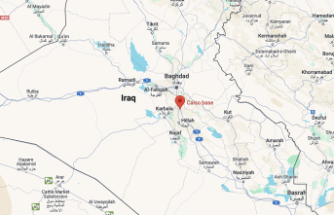A warm bath during labor or an actual water birth have clear benefits for healthy mothers and their newborns, according to a team of researchers. According to the researchers' review, fewer painkillers need to be used compared to "country births", perineal tears and incisions are rarer and the mothers assess the birth more positively afterwards. The researchers write in the journal BMJ Open that immersion in water is an effective method for relieving pain during labor without increasing the risks of childbirth.
Many pregnant women find soaking in warm water relaxing and pain relieving while in labor. The actual birth can take place after a bath "on land" or directly in or under water.
In this case, the children only breathe when they are lifted out of the water. Ethel Burns from the Oxford Brookes University Faculty of Health and Life Sciences (Great Britain) and her colleagues have now evaluated 36 studies that have been published on the subject since 2000 in order to be able to better assess the advantages and disadvantages for mothers and children.
In most studies, the births took place in clinics, some also considered births that were attended by midwives, for example in birth centers or at home. In total, data from more than 155,000 women were included. Regardless of whether the women giving birth actually had their child in the tub or had left the tub for the birth, the researchers found the baths to be predominantly beneficial.
Compared to conventional births, fewer epidural anesthetics (PDA) were used, i.e. anesthesia of the spinal cord nerves to relieve pain. Other painkillers were also injected less frequently. In addition, there were fewer perineal tears, i.e. tissue tears between the vulva and anus, and fewer episiotomy incisions had to be made to forestall such tears.
"Water immersion can significantly increase the likelihood of a intact perineum and reduce episiotomy - a procedure that is not beneficial to the perineum or the fetus, increases postnatal pain and anxiety, and can negatively impact a woman's birth experience," write the researchers. Other advantages: After the birth, there was less severe bleeding and the mothers were generally more satisfied with the birth experience.
The umbilical cord was injured or torn more frequently during water births. This probably happens when the newborns are lifted out of the water and the umbilical cord is pulled too early.
With a good four cases per 1000 births, the proportion is still low. For normal births, the number was about one case in 1000 births. According to earlier studies, midwives can deal well with such incidents, and the newborns are not threatened with any negative consequences.
According to the study, the rate of caesarean sections did not differ, and injuries to the anal sphincter did not occur more frequently. The researchers did not find any increased risks in water births for the newborn either. Compared to normal births, they found no differences in the post-birth Apgar scores, which describe the basic health of the newborn. Babies did not have more breathing problems, nor did they die more.
The researchers summarize that birth pools and water births are a simple measure in obstetrics to increase quality and satisfaction. However, further studies are needed in which more details are recorded, such as how many births the parturients have already had, how they were cared for during the birth and where they gave birth.












